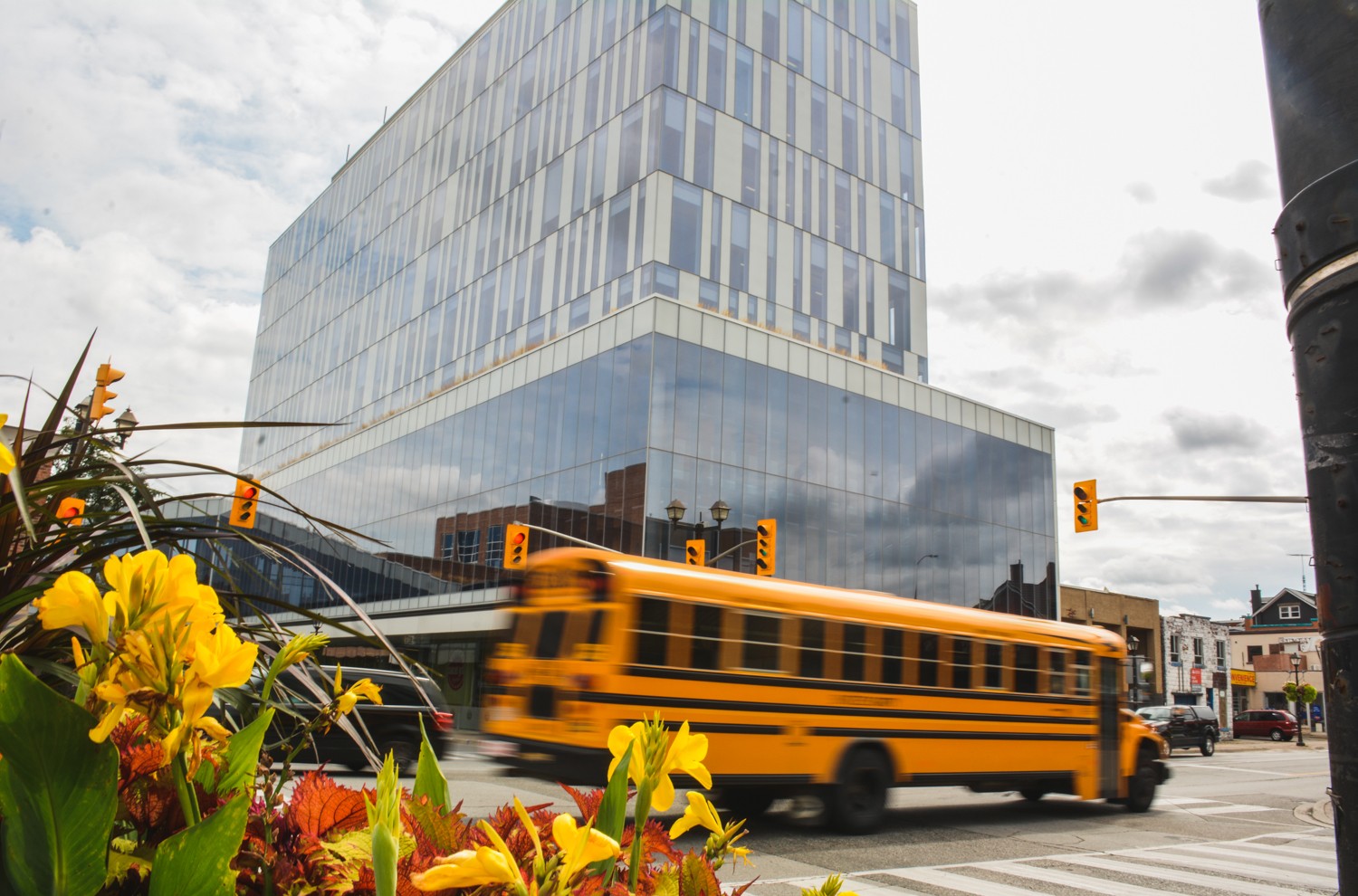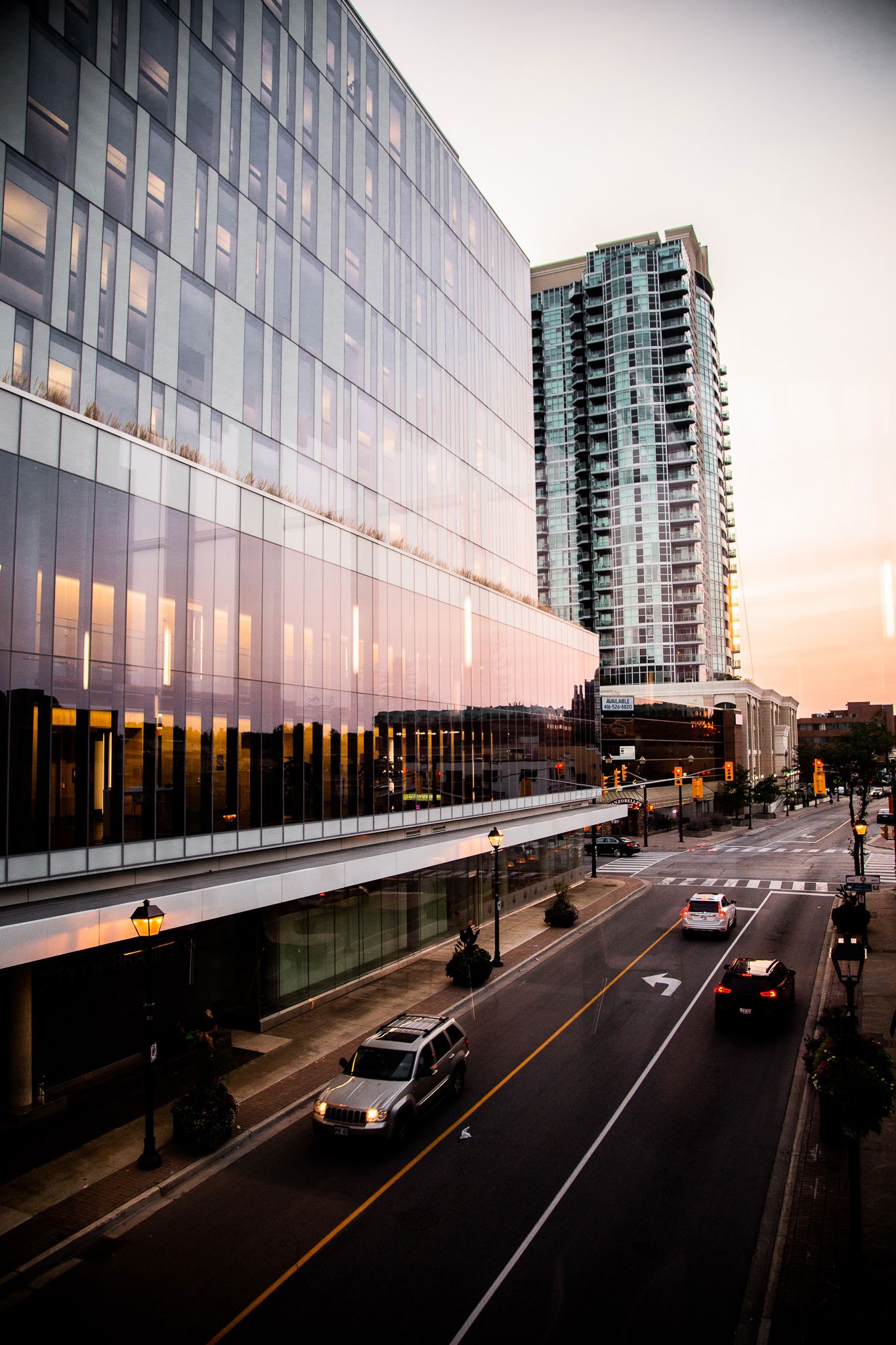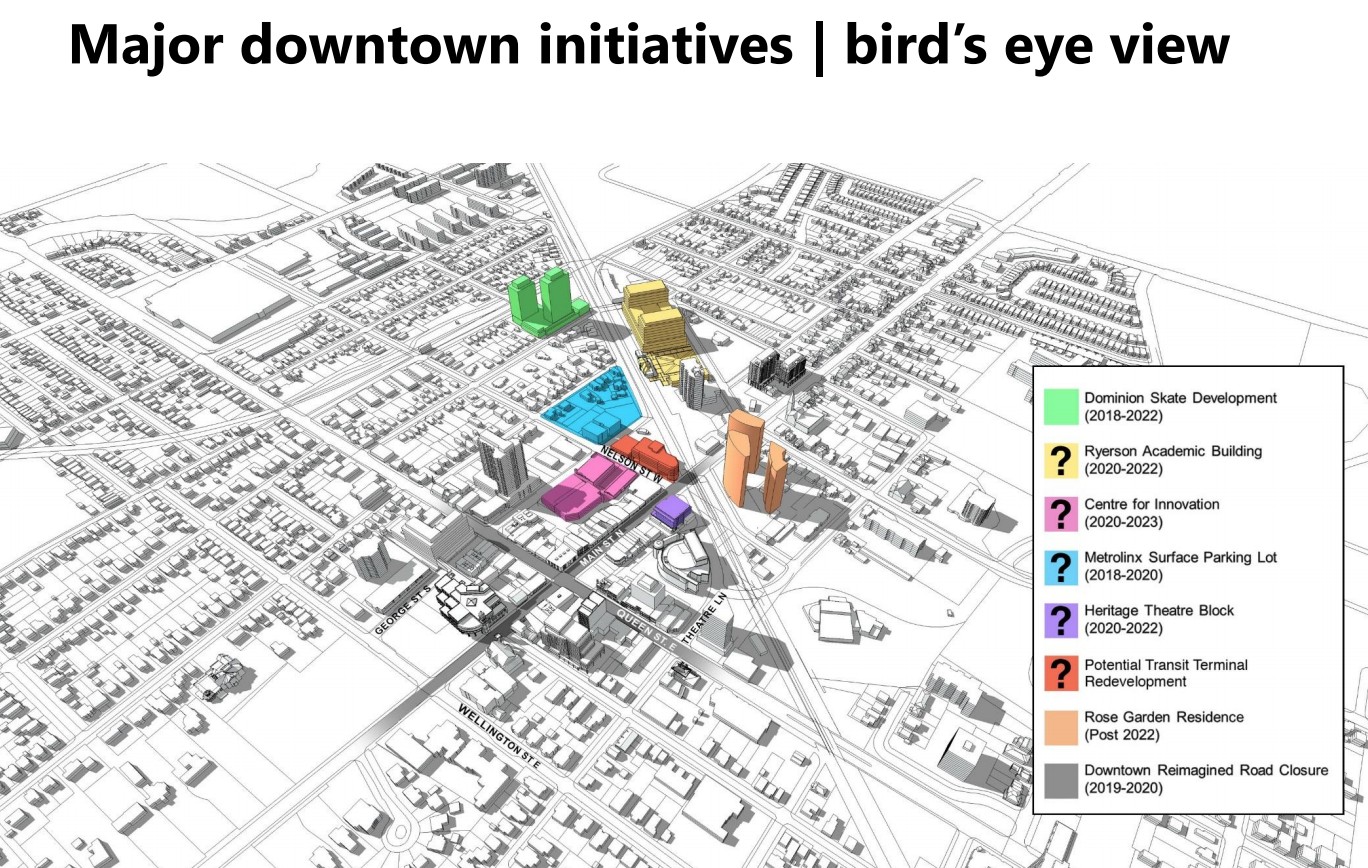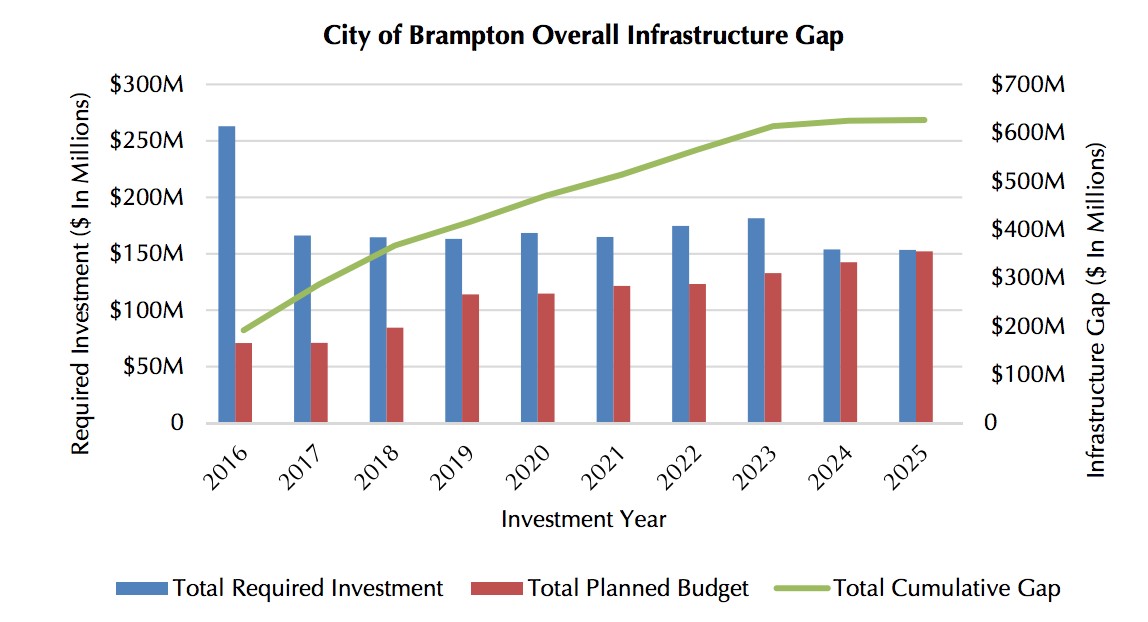
Downtown Reimagined conundrum highlights pressing infrastructure issue
A group of councillors and a mayor who campaigned on making downtown improvement a top priority may have to put a major revitalization project on the back burner because of financial questions. But it’s a tough decision: delaying the work means running the risk of failures in aging infrastructure and raises fresh uncertainty about whether utilities downtown can support future growth.
A report from staff set to go before councillors during the final regular meeting of the year on Wednesday recommends putting the $30-million Downtown Reimagined project on hold until lingering issues are sorted out. These include the fate of the Ryerson University satellite campus after the provincial funding was revoked in October and council’s recent decision to reconsider putting an LRT on Main Street, something not considered in the Downtown Reimagined plans.
The Reimagined project involves major overhauls to the streetscape, including widening sidewalks, adding bike lanes, and extensively replacing regional water and sewer lines below the street level.
Following a lengthy environmental assessment and tendering process, the project was supposed to begin in earnest in spring 2019, prompting road closures for three to four years in parts of downtown.
By putting those improvements on hold, the city runs the risk of more water main breaks and other infrastructure failures, which can be both irksome and debilitating to city streets. An example is the water main break in November near the Gateway Terminal, which disrupted service on 10 bus routes.
Council will be considering a trio of options, each with various drawbacks.

Option 1: Push ahead
With the amount of work that has already been poured into the project, the simplest choice would be for council to keep its foot on the gas.
Staff acknowledge that more funding could be allotted to the project budget to allow the work to move ahead on the current schedule, with the region’s portion of the infrastructure work getting underway this spring.
This option could be attractive to downtown development advocates who would like to see the work done and over with as soon as possible.
The debate comes down to reconciling dichotomous views, with one side looking to preserve heritage aspects of downtown and the other hoping to bring the city centre into the modern age. This was the crux of the issue when councillors turned down the Main Street LRT route in 2015.
The Downtown Reimagined project looks to strike a path right down the middle.
The Region of Peel has wanted to replace the aging water and sewer infrastructure for years and approached the city about digging in and ripping out the old pipes back in January 2016. The region plans to replace water mains, replace and insulate existing sanitary sewers, and install additional water mains, sanitary and storm sewers and utilities to accommodate future growth.
One reason to forge ahead is because the project has already moved through the environmental assessment phase, several council approvals, provincial ministry approval, and finally detailed design of the project, over the past two years. The final phase has been delayed because of trouble investigating underground water channels flowing beneath downtown and deciding on the work or remediation required to deal with them.
The region is responsible for underground aspects of the project, while the city’s part of the plan is aimed at making downtown streets more walkable and pedestrian friendly. This means increasing the width of sidewalks along Main Street from Nelson to Wellington Street (and various other locations) to improve pedestrian capacity and create space for cafe patios.
The project also includes new bike lanes on both sides of the street and one lane of vehicle traffic in each direction along Queen Street and Main Street through downtown.
The space for wider sidewalks and bike lanes would come from removing on-street parking. The city has said vehicles displaced by these changes can be accommodated in existing parking facilities in the downtown core.
While this option could expedite turning Brampton’s downtown into a haven of walkable streets and alternative transit, staff warn that there are financial risks. The final costs remain uncertain.
The city has budgeted about $30 million in “borrowed financing” for the project, with approximately $2.5 million of that dedicated to the initial EA and planning already completed. This initial budget appeared to be more than enough to cover the cost of the project outlined in the EA, estimated at $23 million.
But it now seems that budget is too low. As the city’s report states, the final design has yet to be completed, and the costly investigation of the underground channels and work needed there must still be factored in.
Each of the four bids received in response to the region’s tender came in above the city’s budgeted amount, ranging from $55 million to $73 million. Under the joint contract with the region, the city would be solely responsible for $36 million to $45 million of that total, depending on which bidder was selected.

Tender results for Downtown Reimagined work
Moving ahead at this point would mean council has to sign off on an unknown final tab, with the potential for additional costs as the city digs deeper beneath the streets.
Questions sent to the City of Brampton by The Pointer with regard to financing for the project had not received a response as of this writing.
Option 2 - Let the region take the lead
Several wrenches have been thrown into the works in recent months, one of them by council itself.
Just last week, council voted in favour of a motion to prioritize the Main Street LRT route as the city’s choice for higher-order transit.
This could change many aspects of the streetscape design created for Downtown Reimagined, which was drawn up without an LRT in mind.
On top of that, the provincial government’s decision in October to revoke funding for the planned Ryerson University campus raises the opportunity to reconsider the location chosen for the campus and the associated Centre for Innovation. It’s possible better alternatives could be found.
With these uncertainties in mind, Option 2 suggests allowing the region to go ahead with infrastructure repair and replacement while pressing the pause button on the city’s portion of the project.
This, the staff report acknowledges, would save the city from dealing with financial surprises down the road. There would be no penalty for cancelling the tender, as it falls within the 120-day period for the city and region to make a final decision. Going this route offers the region the opportunity to re-tender the water and sewer lines project and move ahead, while the city completes a thorough investigation into the channels under downtown and creates a detailed design for the project to move ahead at a later date.
Business owners and others who frequent the downtown core will see the obvious flaw in this plan, which means two agonizing periods of construction and disruption rather than one.
Staff note that issue in the report, while also pointing to the additional, and unknown, cost of temporary restoration efforts needed in the meantime.

Placing infrastructure improvements on hold raises the question of whether the existing infrastructure will be able to support the series of major development projects slated for downtown in the years ahead.
Option 3 - Stop everything
Staff’s chosen option, and recommendation to council, is to put all aspects of the project on hold.
That protects the city from the unknown costs of moving ahead now, would not require two separate disruptions, and would let the city move ahead after pinning down a more solid idea of what the project will cost.
Waiting would allow staff to prepare a full report on Downtown Reimagined that accounts for all the initiatives and projects affecting the core area, including the outcome of the LRT and university campus initiatives.
Staff suggest this is the best option because it doesn’t commit the city to covering unforeseen costs and avoids moving ahead with an incomplete plan.
But it’s not without its risks, including leaving aging infrastructure in the ground for an extra year or more.
“There will be continued risk of having water main breaks in the downtown core, which could result in business and traffic disruption,” the report says.
These breaks are as unpredictable as they are inevitable, Peel Region spokesperson Maria Andersen told The Pointer in an email.
“While the region has a comprehensive management plan and capital plan to address infrastructure replacement, occasional water main breaks will still occur, as it is impossible to identify small deficiencies in the system.”
While the region’s 2017 Enterprise Asset Management Plan lists the overall health of the region’s infrastructure and services as “very good,” that doesn’t mean portions of pipe beneath the surface aren’t close to the breaking point, especially when tested by frigid weather.
“Asset infrastructure can be at varying stages in its lifecycle. The Region is managing its risk well, but this does not mitigate the potential for an unforeseen event to occur,” Andersen wrote.
A final decision will be made at Wednesday’s council meeting, set to get underway at 9:30 a.m.
Whichever option is chosen by council, it won’t be the last time this term that tough questions will arise from the city’s growing infrastructure needs.
Whether it’s replacing aging pipes or building more services to accommodate accelerating growth, council will need to deal with the results of long-term, chronic underfunding of the underlying services that ensure clean water flows into homes and dirty water leaving them is properly treated.
The city’s Long Term Financial Master Plan, approved by council in 2017, reflected the fact that Brampton, like municipalities across the province, had not been putting enough money into supporting its infrastructure, or into reserves to deal with future repair, replacement and growth-related needs.
The financial master plan, using data from 2016, estimated that if nothing was done, by 2025, Brampton would be staring down an infrastructure gap of $650 million — that being the difference between available capital funding and projects that would need to be completed in a given year.

According to city spokesperson Christine Sharma, staff have recommended a “minimum standard” to deal with that gap.
During its last term, council approved a dedicated 2 percent annual tax increase in the form of an infrastructure levy, while continuing to advocate for new infrastructure funding from senior governments, Sharma wrote.
However, the levy falls well short of the 4.9 percent recommended in the financial master plan to pay for infrastructure improvements.
At the regional level, a 3 percent levy was attached to utility rate-based assets (water and wastewater) in 2017 to increase infrastructure funding; this year, that charge was increased to 5 percent.
The upcoming decision on the Downtown Reimagined project and the inevitable debate surrounding infrastructure funding at budget time will paint a real picture of how prepared the city’s new elected officials are to deal with the growing city and the tough decisions that come along with it.
Submit a correction about this story


